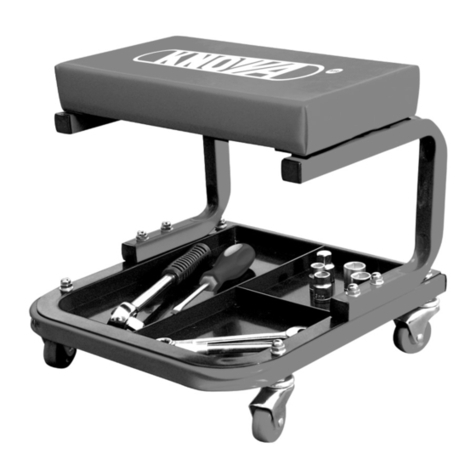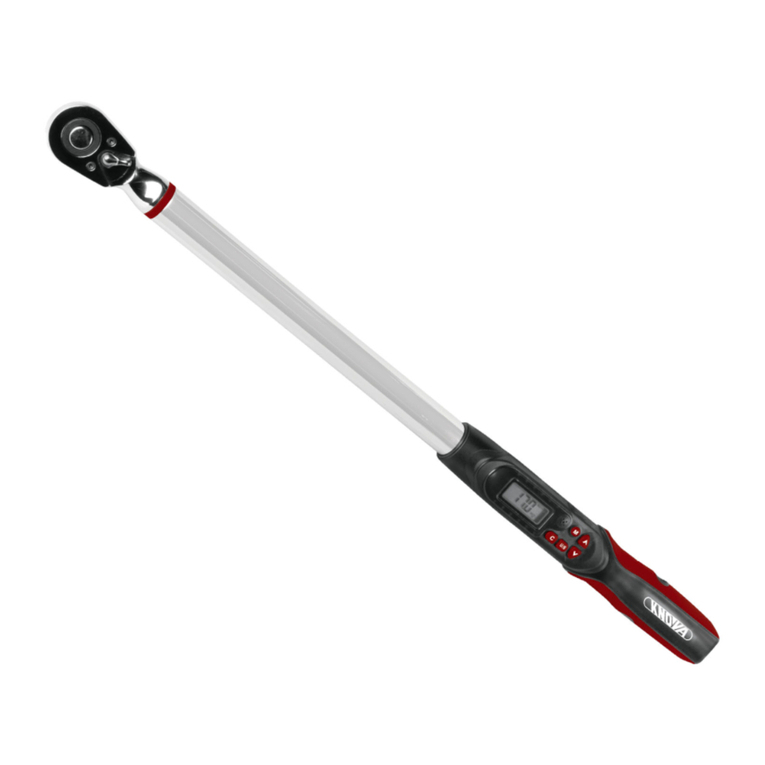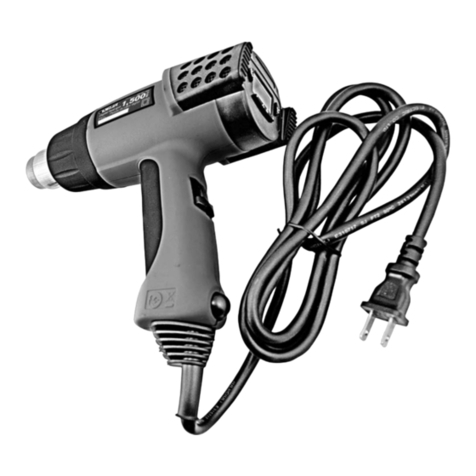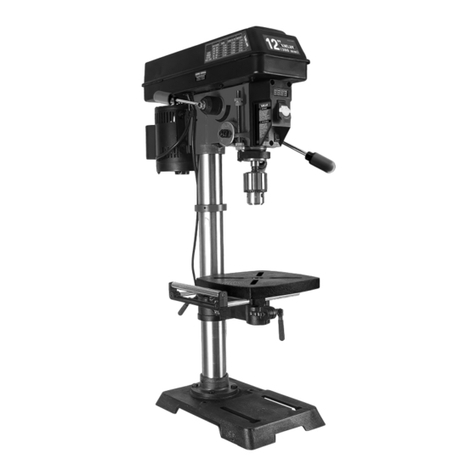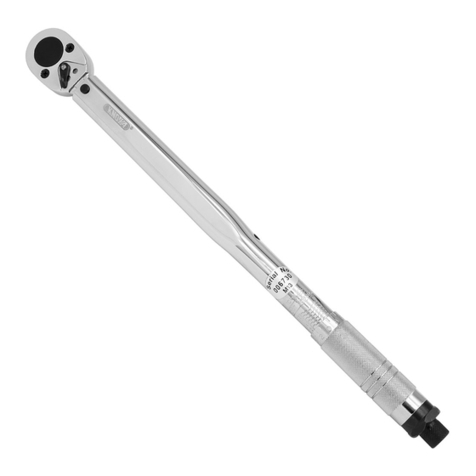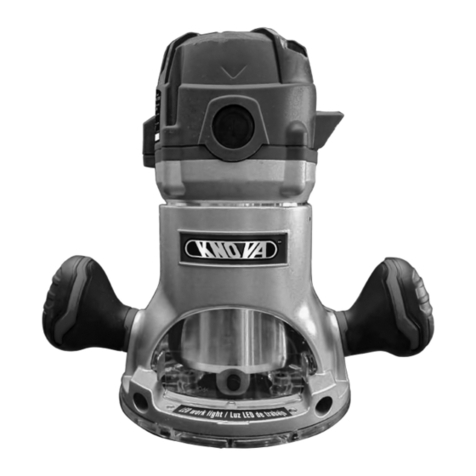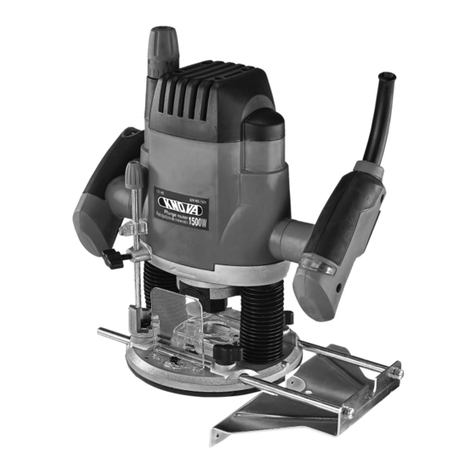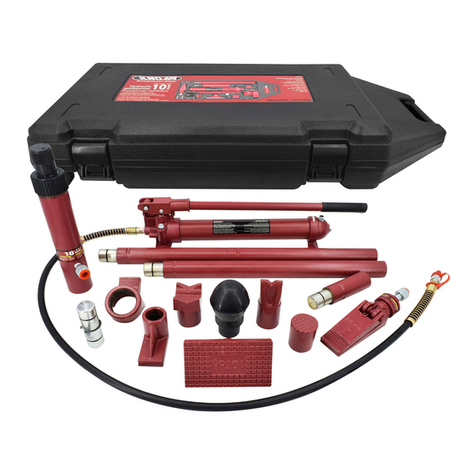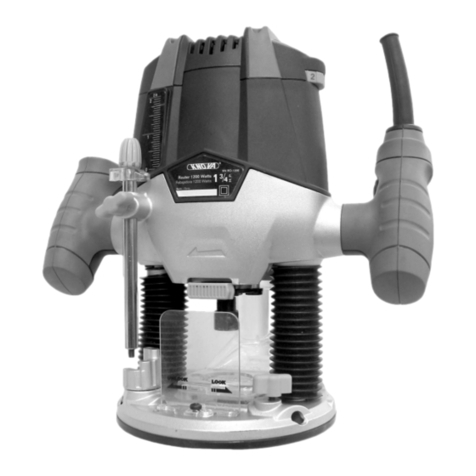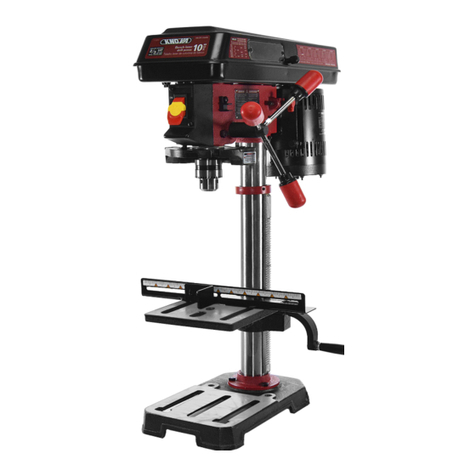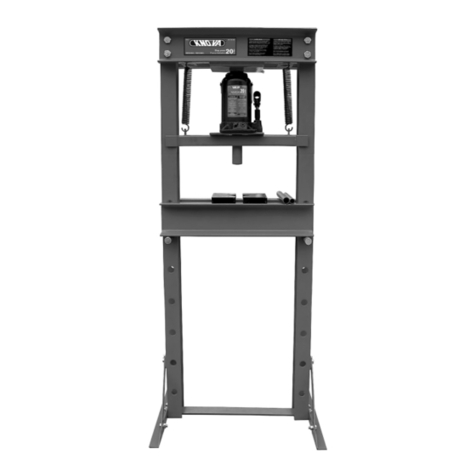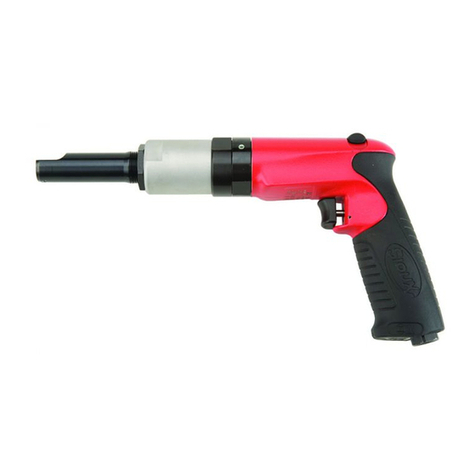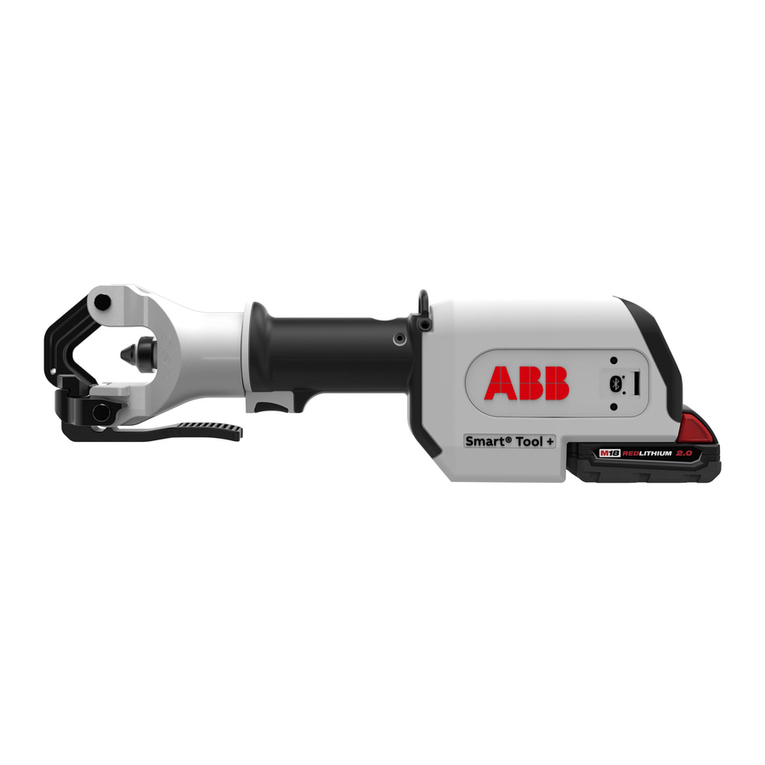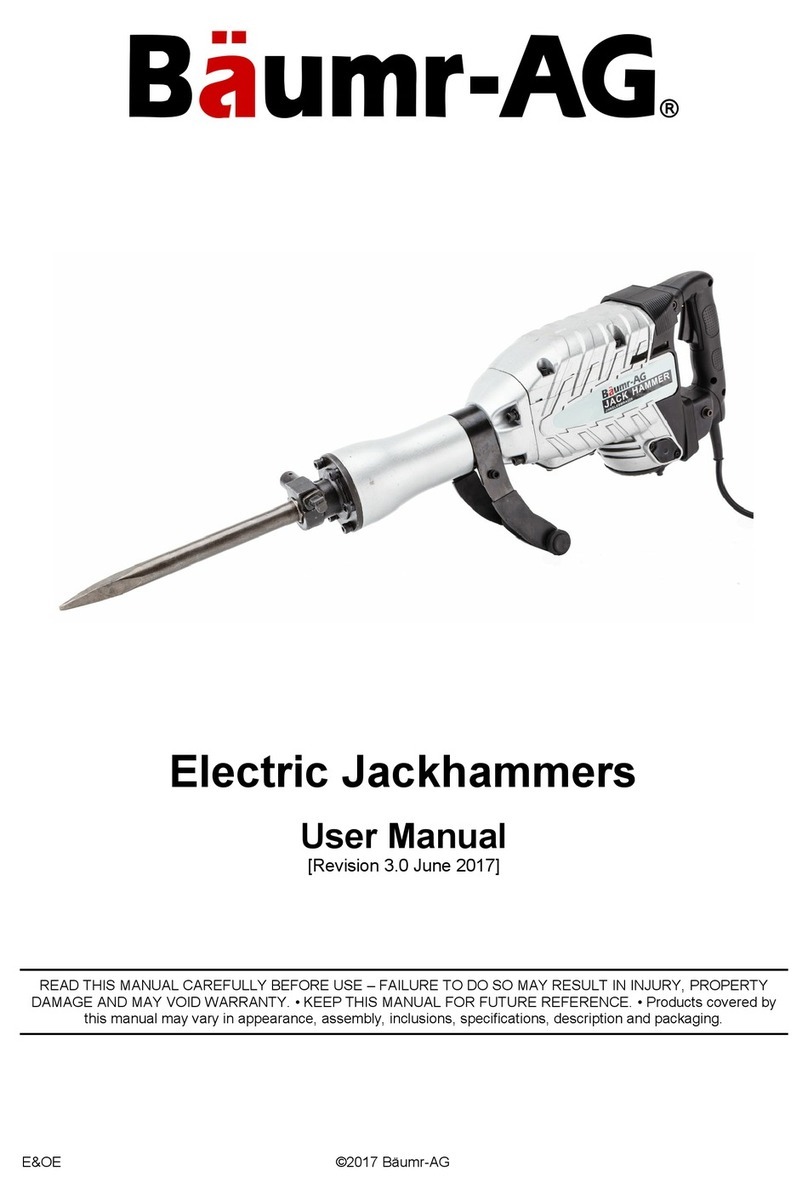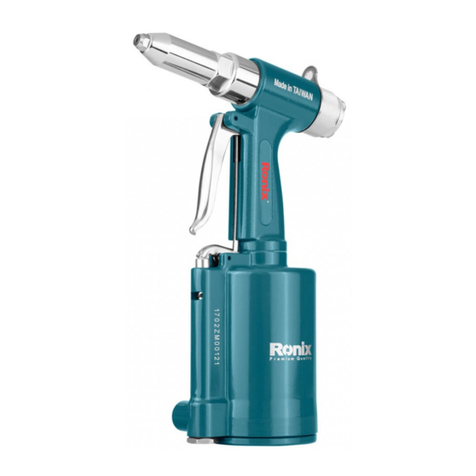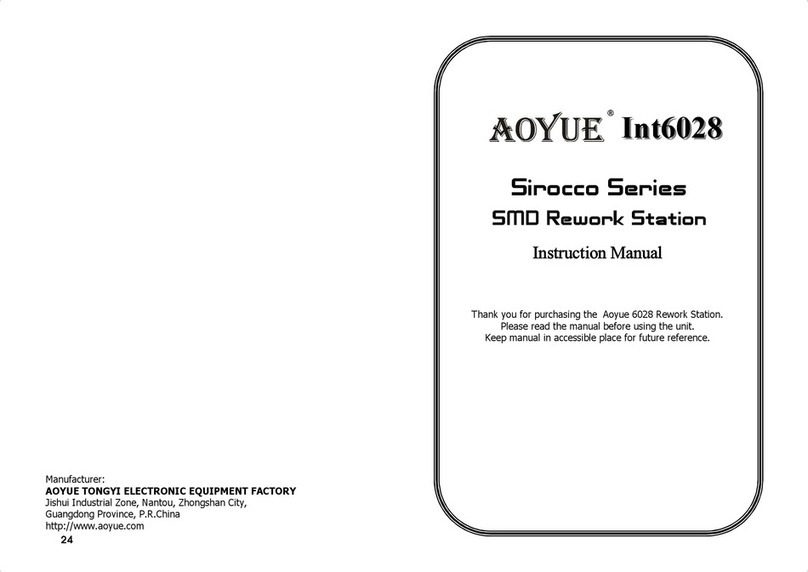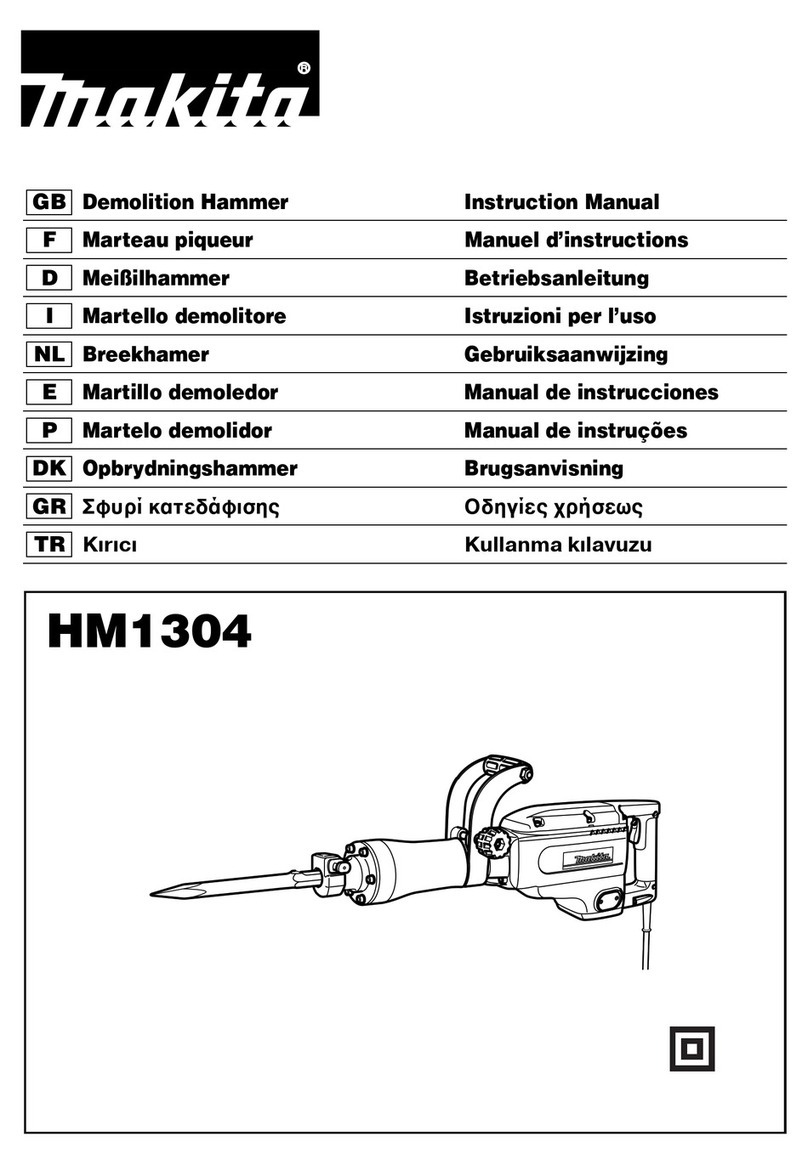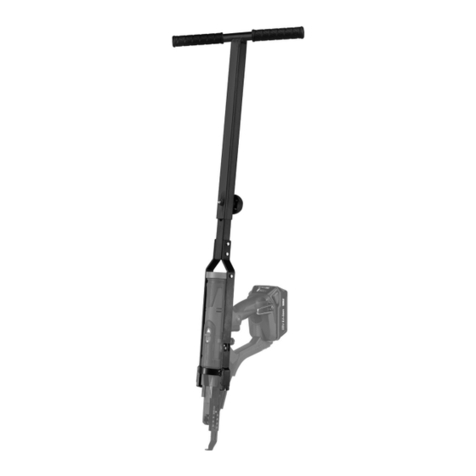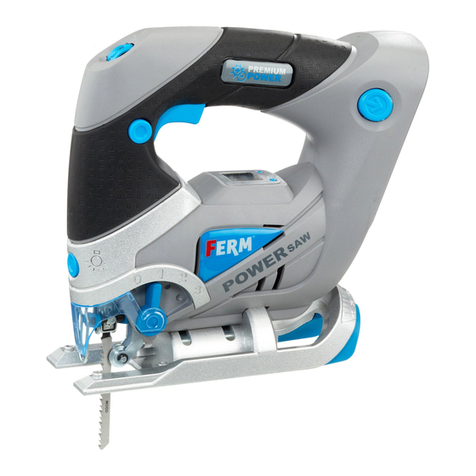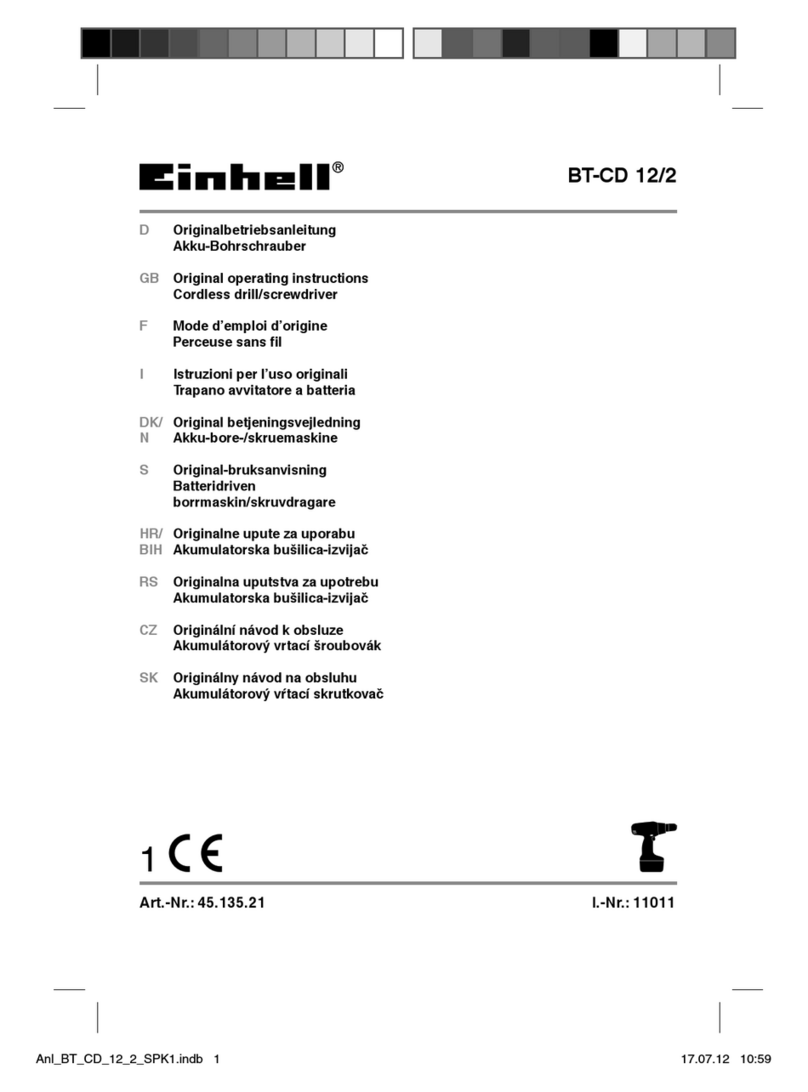
2
GENERAL POWER TOOL SAFETY RULES
• When operating a power tool outdoors, use an
extension cord suitable for outdoor use. Use of a cord
suitable for outdoor use reduces the risk of electric shock.
• If operating a power tool in a damp location is
unavoidable, use a residual current device (RCD)
protected supply. Use of an RCD reduces the risk of
electric shock.
Personal safety
• Stay alert, watch what you are doing and use common
sense when operating a power tool. Do not use a power
tool while you are tied or under the inuence of drugs,
alcohol or medication. A moment of inattention while
operating power tools may result in serious personal injury.
• Use personal protective equipment. Always wear eye
protection. Protective equipment such as dust mask,
nonskid safety shoes, hard hat, or hearing protection used
for appropriate conditions will reduce personal injuries.
• Prevent unintentional starting. Ensure the switch is in
the off-position before connecting to power source
and/or battery pack, picking up or carrying the tool.
Carrying power tools with your nger on the switch or
energizing power tools that have the switch on invites
accidents.
• Remove any adjusting key or wrench before turning the
power tool on. A wrench or a key left attached to a
rotating part of the power tool may result in personal
injury.
• Do not overreach. Keep proper footing and balance at
all times. This enables better control of the power tool in
unexpected situations.
• Dress properly. Do not wear loose clothing or jewelry.
Keep your hair, clothing and gloves away from moving
parts. Loose clothes, jewelry or long hair can be caught
in moving parts.
• If devices are provided for the connection of dust
extraction and collection facilities, ensure these are
connected and properly used. Use of dust collection can
reduce dust-related hazards.
• Do not let familiarity gained from frequent use of tools
allow you to become complacent and ignore tool safety
principles. A careless action can cause severe injury
within a fraction of a second.
Power tool use and care
• Do not force the power tool. Use the correct power tool
for your application. The correct power tool will do the
job better and safer at the rate for which it was designed.
• Do not use the power tool if the switch does not turn it
on and off. Any power tool that cannot be controlled with
the switch is dangerous and must be repaired.
• Disconnect the plug from the power source and/or
remove the battery pack, if detachable, from the power
tool before making any adjustments, changing
accessories, or storing power tools. Such preventive
safety measures reduce the risk of starting the power
tool accidentally.
• Store idle power tools out of the reach of children and
do not allow persons unfamiliar with the power tool or
these instructions to operate the power tool. Power
tools are dangerous in the hands of untrained users.
• Maintain power tools and accessories. Check for
misalignment or binding of moving parts, breakage of
parts and any other condition that may affect the
power tool’s operation. If damaged, have the power
tool repaired before use. Many accidents are caused by
poorly maintained power tools.
• Keep cutting tools sharp and clean. Properly maintained
cutting tools with sharp cutting edges are less likely to
bind and are easier to control.
• Use the power tool, accessories and tool bits etc. in
accordance with these instructions, taking into account
the working conditions and the work to be performed.
Use of the power tool for operations different from those
intended could result in a hazardous situation.
• Keep handles and grasping surfaces dry, clean and free
from oil and grease. Slippery handles and grasping
surfaces do not allow for safe handling and control of the
tool in unexpected situations.
Service
• Have your power tool serviced by a qualied repair
person using only identical replacement parts. This will
ensure that the safety of the power tool is maintained.
IMPORTANT SAFETY INSTRUCTION FOR DRILL PRESS
WARNING
For your own safety, do not try to use your drill press
or plug it in until it is completely assembled and
installed according to the instructions, and until you
have read and understood this instruction manual.
• YOUR DRILL PRESS MUST BE BOLTED securely to a
workbench. In addition, if there is any tendency for your
drill press to move during certain operations, bolt the
workbench to the oor.
• THIS DRILL PRESS is intended for use in dry conditions,
indoor use only.
• WEAR EYE PROTECTION. USE a face or dust mask
along with safety goggles if drilling operation is dusty.
USE ear protectors, especially during extended periods
of operation.
• DO NOT wear gloves, neckties, or loose clothing.
• DO NOT try to drill material too small to be securely held.
• ALWAYS keep hands out of the path of a drill bit. Avoid
awkward hand positions where a sudden slip could cause
your hand to move into the drill bit.
• DO NOT install or use any drill bit that exceeds 175 mm
(7 in.) in length or extends 150 mm (6 in.) below the chuck
jaws. They can suddenly bend outward or break.
• DO NOT USE wire wheels, router bits, shaper cutters,
circle (y) cutters, or rotary planers on this drill press.
• WHEN cutting a large piece of material, make sure it is
fully supported at the table height.
• DO NOT perform any operation freehand. ALWAYS hold
the workpiece rmly against the table so it will not rock or
twist. Use clamps or a vise for unstable workpieces.
SAVE THIS INSTRUCTION
